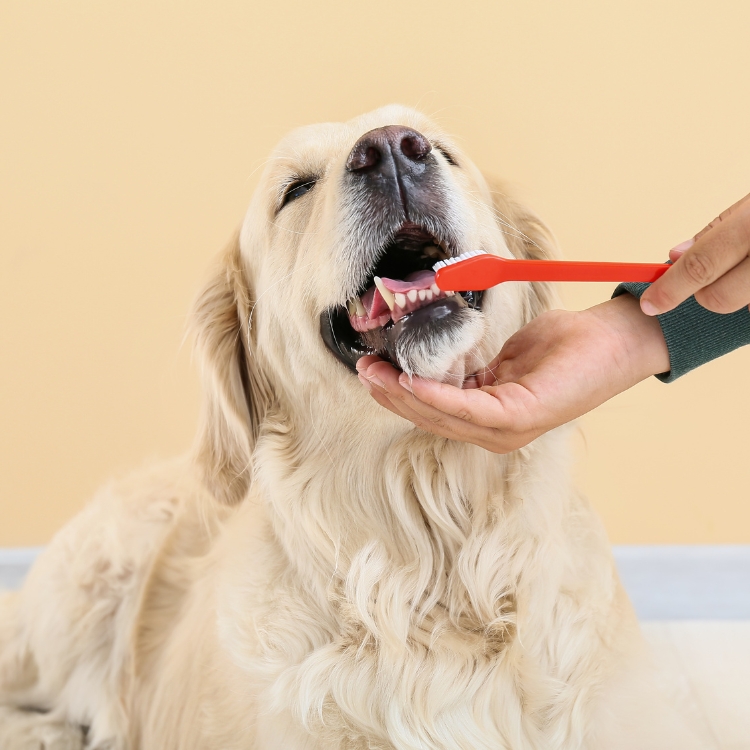Veterinary Services
Pet Dental Care
Did you know that your pets need dental care, too? Starting at the age of three, your pet can begin to show signs of periodontal disease, or inflammation and infection in the gums.

Dental Care
Your pet will receive a version of a dental exam during each visit to protect their overall health! As plaque and bacteria build up on the teeth, you can begin to see a recession of the gingiva, strong odors, bleeding, and even loosening of the teeth. As the disease progresses, other organ systems, such as the heart and kidneys, can be affected by the spread of the bacteria.
Signs of Pet Dental Problems
Halitosis (Bad Breath): Bad breath is often the first noticeable sign of dental issues in pets. It can be caused by bacteria build-up in the mouth, which leads to plaque and tartar formation.
Large Amounts of Tartar and Plaque Build-Up: If not removed, it hardens into tartar, which can be seen as a yellow or brown coating on the teeth. Tartar build-up can lead to gum disease and tooth decay if left untreated.
Abscesses: An abscess is a pocket of pus caused by a bacterial infection. In pets, dental abscesses often occur at the root of a tooth and can cause significant pain and swelling.
Difficulty Eating: Dental problems can make chewing painful for your pet. If your pet is eating more slowly than usual, dropping food from their mouth, or showing reluctance to eat hard food, they may be experiencing dental pain.
Excessive Drooling: While some drooling is normal for certain pets, excessive drooling can be a sign of dental issues. Drooling more than usual can indicate pain or discomfort in the mouth. It may also be a response to an infection or inflammation.
Difficulty Swallowing: Pets with dental problems may find it difficult to swallow their food. This can be due to pain in the mouth or throat, swollen gums, or infections that make swallowing uncomfortable.
Weight Loss: If your pet is experiencing dental pain, they may eat less or avoid food altogether, leading to weight loss. This can be a serious concern, as it affects their overall health and well-being.



Diagnostics
The most important diagnostic tool that is used for evaluating a dental disorder is a thorough exam. If symptoms or signs of a dental disorder are noted on the general exam, it may be recommended to have a sedated oral exam to further investigate the concern. The teeth can then be probed to check for abscesses, cavities, fractures, root damage, root exposure, loosening of the teeth, and other damage. Dental radiographs may be needed to evaluate the root structures further. Bloodwork and biopsies may also be warranted in case of oral masses or lesions.
Treatment
The best treatment and prevention of dental disorders is routine dental cleanings. During the cleaning, your pet is placed under general anesthesia, and the tartar is removed from the teeth using an ultrasonic scaler. The veterinarian then evaluates the teeth for damage and removes any that are necessary. Following the cleaning, the veterinarian brushes and polishes the teeth. If an infection or abscess is identified, antibiotics may be warranted. Anti-inflammatories may also be prescribed by the veterinarian to help with pain and inflammation following extractions and cleanings.
Preventatives
At Calera Animal Hospital, we offer several options to help improve your pet’s dental health between cleanings. Examples include toothpaste, dental wipes, oral flushes, and water additives. Good dental care is crucial to the well-being of your pet. Call Calera Animal Hospital today for more information on the most common medical disorders seen in pets and to schedule your pet’s cleaning!

